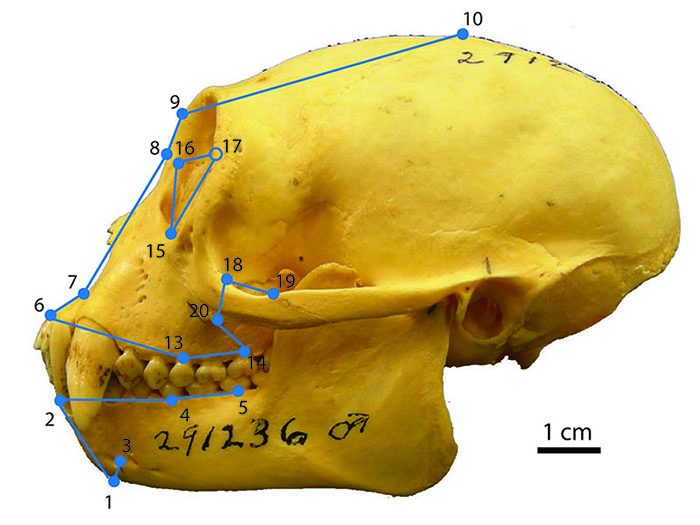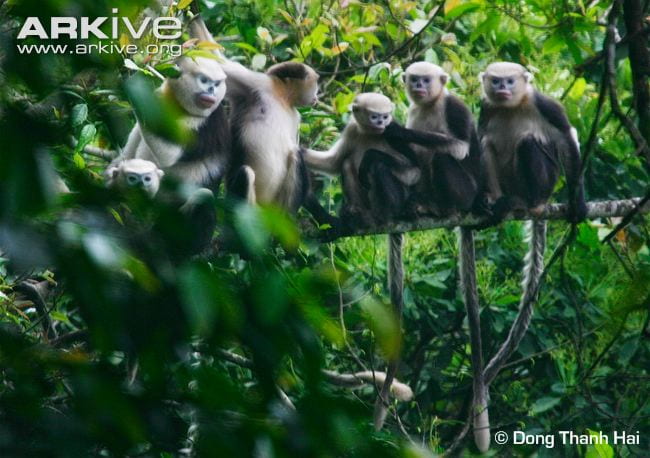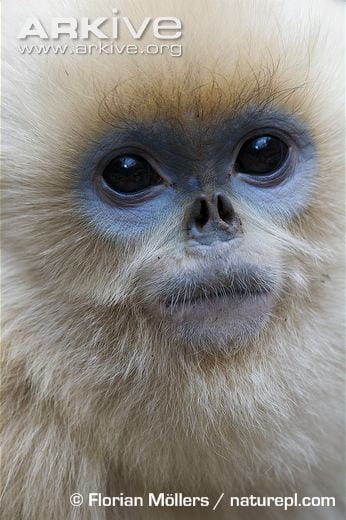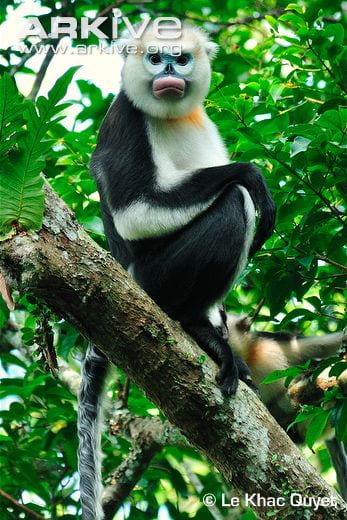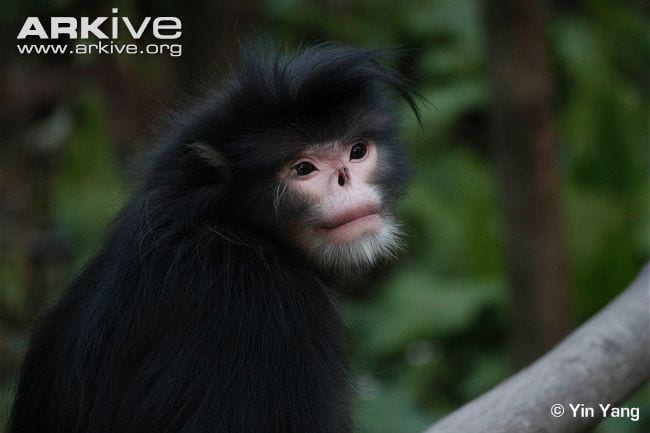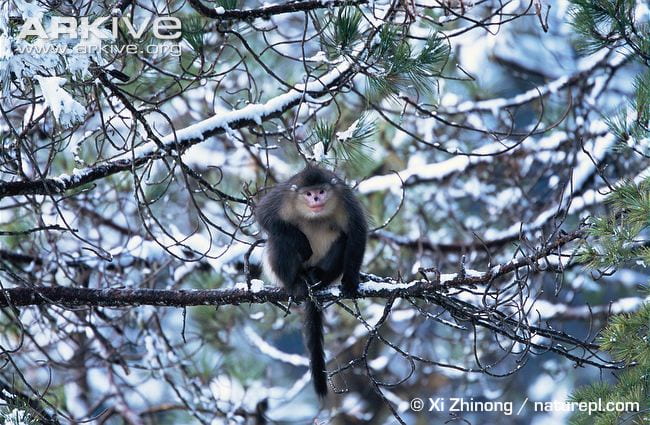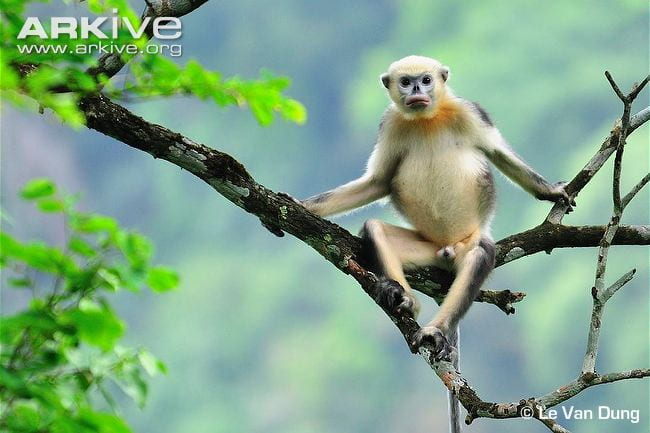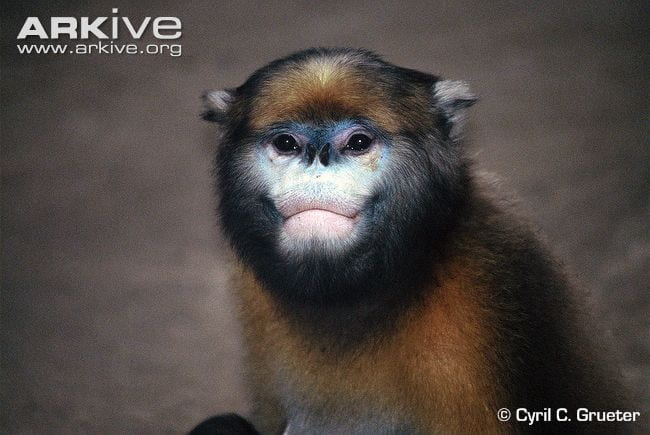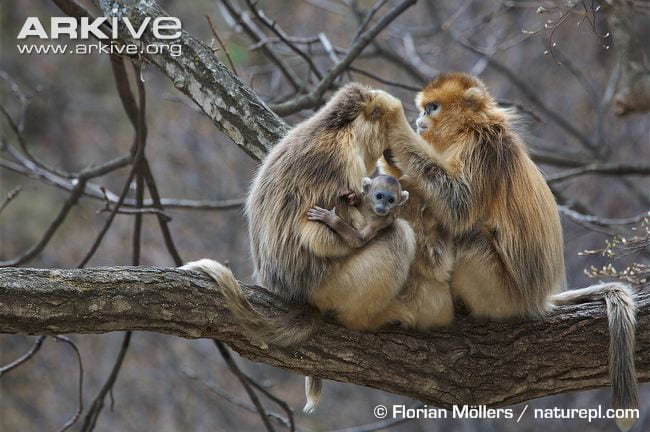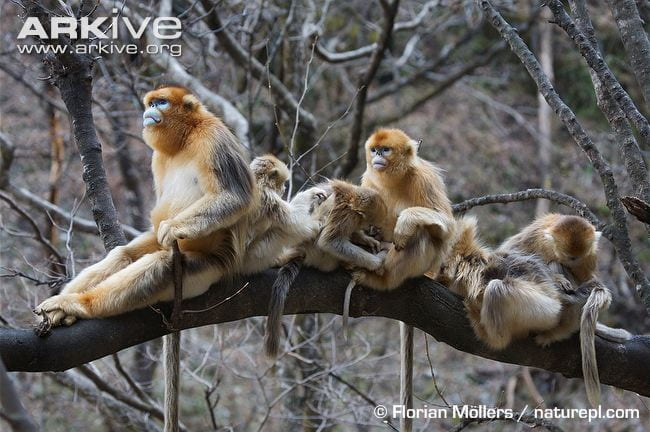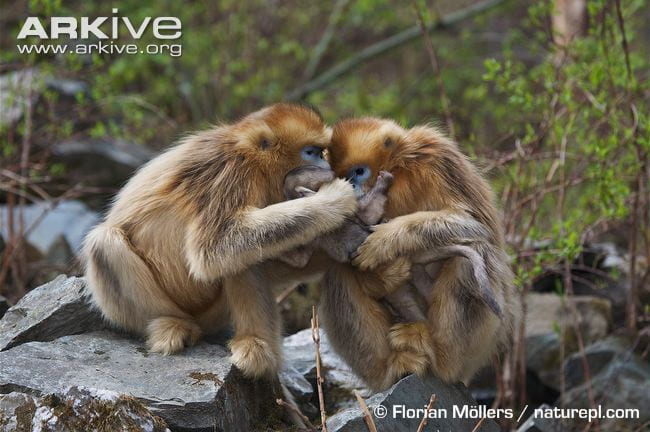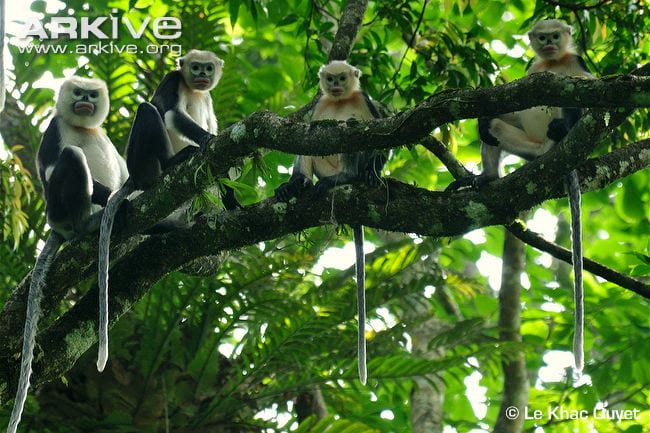Because we saw such an extremely large nose in the last Peculiar Primates feature, we thought you might enjoy the other end of the proboscis spectrum. This week: the snub-nosed monkey! There are currently ten known species of this type of monkey, all in the genus Rhinopithecus (1).
The cool part about many names for groupings of primates is that you can break down the word to tell you more about the animal. For example, we can look at Rhinopithecus, which contains two key Greek word roots. The first part, Rhino, refers to nose or snout (think rhinoplasty – a fancy term for nose job), and the second part, pith, means monkey or ape. This tells us that there is something special about their nose, and they are primates.
So, what’s the deal with the snub-nosed monkey nose? They actually lack one! Well, not really. They still have a nose, but no external part like we have – called nasal passages – and especially no enlarged external part like the proboscis monkey. Why? I’m so glad you asked. We really don’t know. I wish I had some cool and interesting information about why the snub-nosed monkeys have snubbed noses, but there isn’t much research done on this topic to date. Overall, less is known about the snub-nosed monkeys than a lot of other primate groups, which is largely due to difficulty accessing their habitats. You could be the next great Rhinopithecus nose researcher!
There are a couple of main options when it comes to understanding how animals look: sometimes they have a particular trait because it helps them do something (like how tails help many animals keep their balance), or they have a trait because the other sex in their species likes how it looks and they will mate with those who have the trait and pass it on to their offspring (like peacock tails). So the snub nose might help these monkeys perform better in their environment, or they could just like how it looks. We just don’t know! There are some other more complicated options that we don’t have time to get into right now, but email Ashly if you want to talk about what those could be.
All wild snub-nosed monkeys live in Asia. They mostly inhabit the mountain forests of China, Myanmar, and northern Vietnam (2). In these forests, snub-nosed monkeys live up in the trees and because they are part of the Colobine group of primates (described in this Peculiar Primates post about proboscis monkeys), they eat mostly leaves and bark (3). In addition to their weird noses, the Rhinopithecus species who inhabit these different areas have different coloring (some pictured below), and their coloring only adds to their strange look.
A recently published scientific paper about the golden snub-nosed monkey (Rhinopithecus roxellana) described an interesting behavior (4). Most golden snub-nosed monkey mothers nurse their infants along with the infants of other mothers in their living group. This practice is called allomothering, or more specifically allomaternal nursing or allonursing. Allomothering is essentially babysitting, but allomaternal nursing is much more energetically costly to the mothers that do it. While other primate groups allomother, few actually nurse the infants of others, but this practice allows about 65% of infants to survive to adulthood. This survival rate is much higher than for infants whose mothers do not allonurse. You can find the study here, or this great National Geographic summary of it here.
All species of snub-nosed monkey are endangered, but a some are assigned the critically endangered status by the IUCN Red List of Threatened Species (Rhinopithecus strykeriand Rhinopithecus avunculus). This is due to human activities that affect their habitat such as logging, damming and water management, agriculture, and urban development. Conservation efforts, like site management and awareness/education, are needed to save these wonderful species.
Here is video showing some of the trials and tribulations of the Yunnan snub-nosed monkey, including looking like Yoda:
This is our writer’s very favorite primate group, so we hope you enjoyed these noseless cuties at least half as much as they do. As always, reach out to Ashly Romero with questions or comments at anromero@uark.edu, and look at the references below for other additional information.
References:
- Liedigk et al. (2012). Evolutionary history of the odd-nosed monkeys and the phylogenetic position of the newly described Myanmar snub-nosed monkey Rhinopithecus strykeri. PLOS ONE.
- Rhinopithecus. IUCN Red List. https://www.iucnredlist.org/search?query=Rhinopithecus&searchType=species
- Rhinopithecus roxellana. Animal Diversity Web. https://animaldiversity.org/accounts/Rhinopithecus_roxellana/
- Xiang et al. (2019). Routine allomaternal nursing in a free-ranging Old World monkey. Science Advances.
